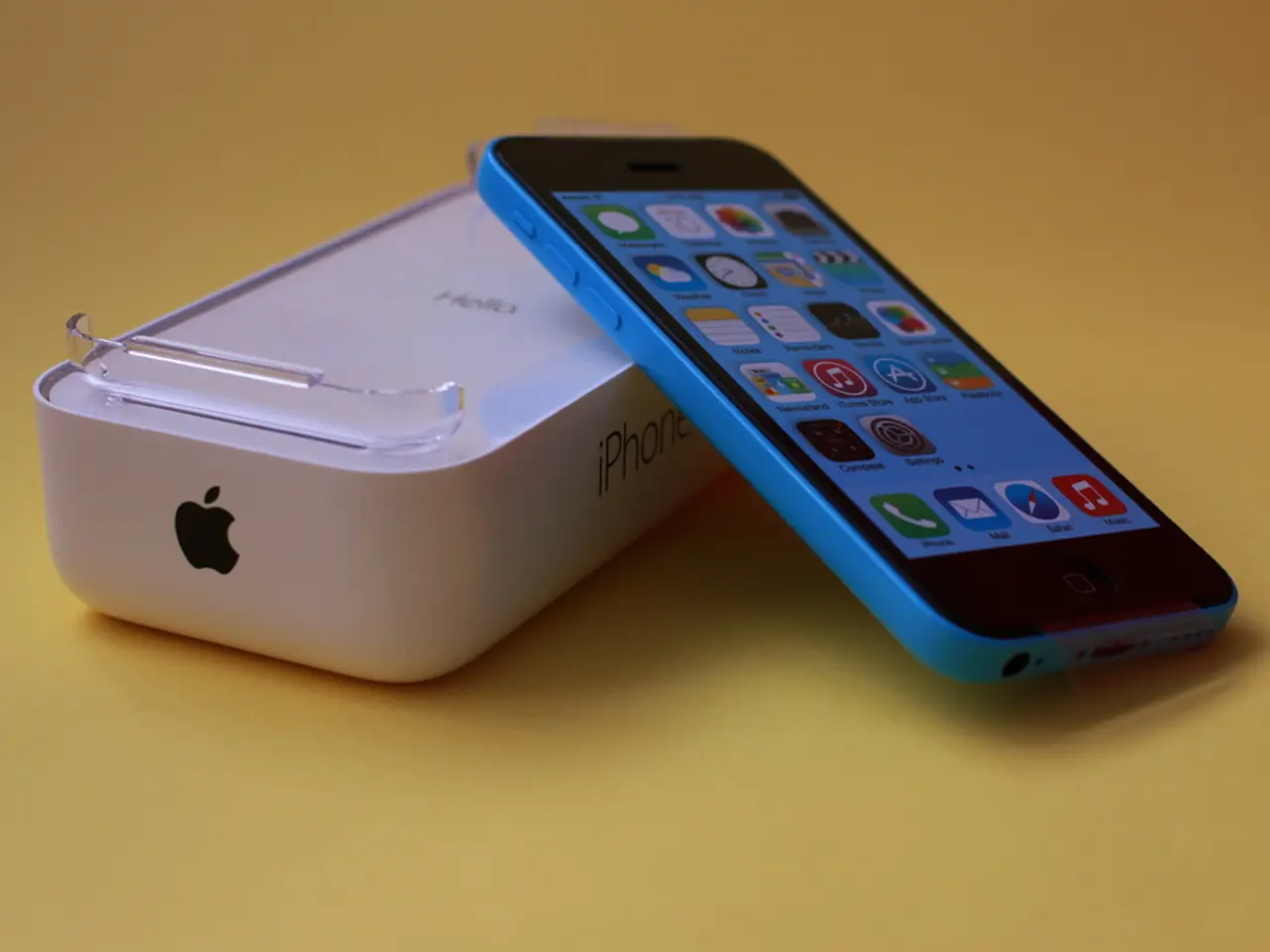Apple is not planning to develop a flip-phone style foldable iPhone, which is regrettable.
Apple, the tech giant known for its sleek and innovative devices, is set to release a groundbreaking product in 2026 - a foldable iPhone. This device, rumoured to be a flip-style phone, promises freshness and affordability, marking a significant departure from the company's traditional offerings.
The foldable iPhone is expected to offer several advantages over current models, particularly in the areas of software interactions and design uniformity. One key advantage is the seamless transition between displays. Apple will need to significantly overhaul iOS to handle smooth transitions from a smaller exterior display to a larger inner display, similar to how iPadOS manages larger screens. This could enable apps to dynamically adapt to different screen sizes and proportions, enhancing multitasking and user experience in ways current single-screen iPhones cannot offer.
Another advantage is the book-like design with uniform aspect ratio. The foldable iPhone is rumoured to use a 4:3 aspect ratio on the larger inner display, akin to the iPad’s display. This uniformity in aspect ratio between the folded and unfolded states could simplify app scaling and provide a more consistent interface and user experience compared to existing foldables that change proportions dramatically when unfolded.
The foldable iPhone is also expected to feature a crease-free and durable display, thanks to Apple's liquid hinge technology. This addresses a common drawback in current foldable devices where a visible crease disrupts the user experience.
The foldable iPhone's design aims to blend portability, similar in size to iPhone Mini models, with the functionality of a larger screen. This dual-mode use can provide the convenience of a pocket-sized device with the productivity of a tablet-sized screen without sacrificing design uniformity and premium build quality.
In terms of biometric security, rumours suggest Apple might replace Face ID with a Touch ID side button on the foldable iPhone, potentially improving design uniformity by saving internal space. This change could also enhance user authentication fluidity across the foldable device’s two-display setup.
Apple's design guidelines emphasise immaculate UI interactions on its hardware. The company is known for its attention to detail in software design, and it is expected that the foldable iPhone will reflect this commitment. Additionally, Apple is reported to have improved the hinge mechanism on the foldable iPhone to prevent unfolding problems.
While competitors like Samsung have already entered the market with foldable devices, Apple's approach seems to be more focused on refining the technology to offer a smoother, more user-friendly experience. The foldable iPhone is expected to cost around $1,200, significantly less than a flagship "Pro Max" iPhone. However, it is rumoured to be expensive, with a potential two-thousand-dollar premium.
In 2025, Apple unified the look of its operating systems across screens of all sizes with its Liquid Glass design makeover. This move suggests that the foldable iPhone will not just be a technological marvel, but also a visually appealing device that fits seamlessly into Apple's product lineup.
Apple is also expected to step out of its comfort zone with the iPhone 17 Air, focusing more on mainstream users rather than creative professionals. This shift in strategy, coupled with the upcoming foldable iPhone, suggests a new era of smartphone design from Apple.
Meanwhile, other companies like Motorola are already leading the way in affordable and aesthetically pleasing flip-style foldable phones. The Motorola Razr 2025, for instance, boasts a near-seamless external display and a $700 price tag.
In conclusion, the foldable iPhone represents an exciting evolution in Apple's smartphone lineup. With its focus on software interactions, design uniformity, and innovative features, it promises to offer a unique user experience that sets it apart from current iPhones and other foldable devices on the market. As we eagerly await its release in 2026, it's clear that Apple is pushing the boundaries of what a smartphone can be.
[1] https://www.macrumors.com/2021/07/09/apple-foldable-iphone-features-ui-interactions/ [2] https://www.macrumors.com/2021/06/24/apple-foldable-iphone-design-features/ [3] https://www.macrumors.com/2021/09/30/apple-foldable-iphone-price-specs-rumors/
The foldable iPhone's innovative features, such as seamless display transitions and design uniformity, will set it apart from current smartphones and other foldable devices. Apple's focus on improving UI interactions and overhauling iOS for smooth transitions between displays promises a unique user experience.
The foldable iPhone's book-like design with a 4:3 aspect ratio and potentially crease-free, durable display, address some common drawbacks in current foldable devices, aiming to offer a visually appealing and premium product.




